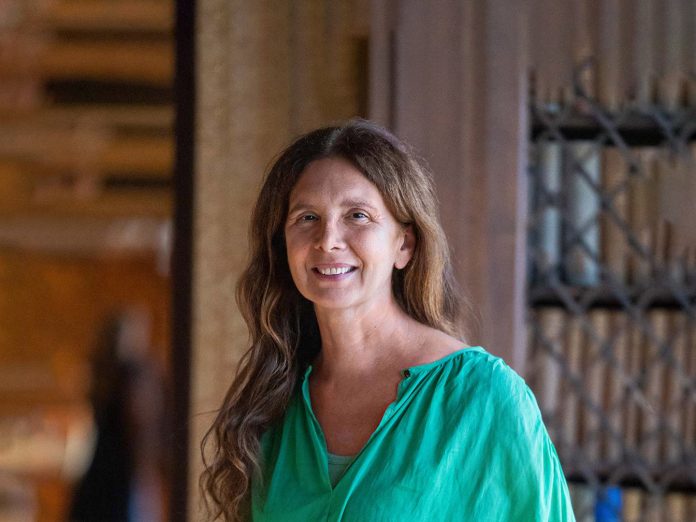Trained in Milan, Michela Cattai moved to Venice in 1984 to study Painting at the Academy of Fine Arts under the guidance of Fabrizio Plessi. A path that nourishes her artistic research, focused on light, transformation, and a personal expressive language. Cattai works with glass, a material that captures light and crystallizes the moment in its passage from liquid to solid. In this metamorphosis, the artist explores aesthetic and conceptual themes, fixing emotions in unrepeatable forms. Working with glass is a continuous challenge, requiring deep knowledge and precision. But it is precisely this complexity that makes the process so fascinating: the satisfaction of giving life to a work that fully reflects the artist’s vision, capturing a fragment of elusive beauty.
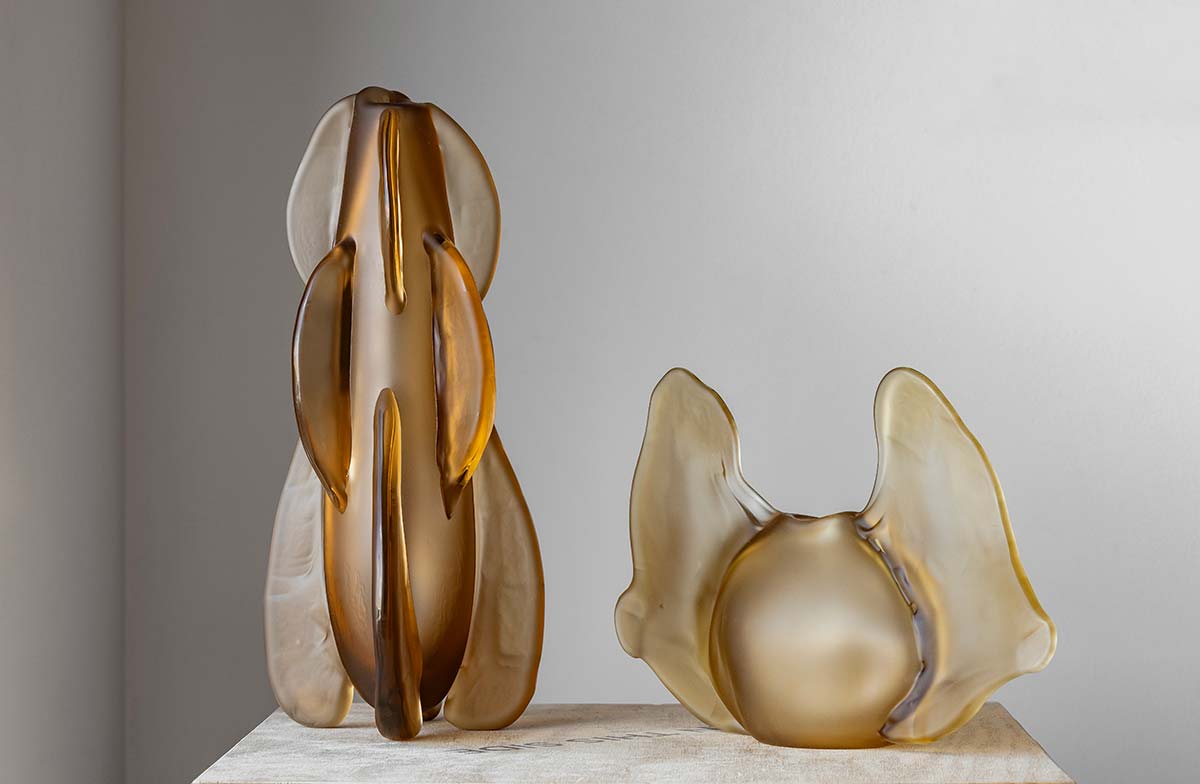
What connects you to glassmaking?
The metamorphosis of glass, from liquid to solid, capable of capturing light and crystallizing the moment, is what fascinates me most. It is an alchemical material that allows me to explore contrasts such as transparency and opacity, fragility and strength, fixing emotions and thoughts in my works. Working with it is a continuous challenge, due to its unpredictability and the need for precision, but the creation of unique pieces is an immense gratification.

What are your main artistic influences?
Carlo Scarpa‘s attention to detail and his ability to innovate within the tradition, together with Paolo Venini‘s pioneering vision, have deeply influenced my work with glass. To these reference figures, I add the material exploration of Eva Hesse and the monumentality of Richard Serra. These influences guide me in exploring glass as an expressive medium to tell my artistic thought, blending innovation and the Murano tradition.
How are your glass works born? Is there a message or an emotion you want to communicate?
The choice of colors and shapes is an intuitive process, inspired by Venice and guided by the emotion I want to convey. Each shade evokes a mood or tells a story. Colored glass, interacting with light, adds poetry to the work. My goal is to communicate beauty and reflection, creating an emotional connection with the viewer.
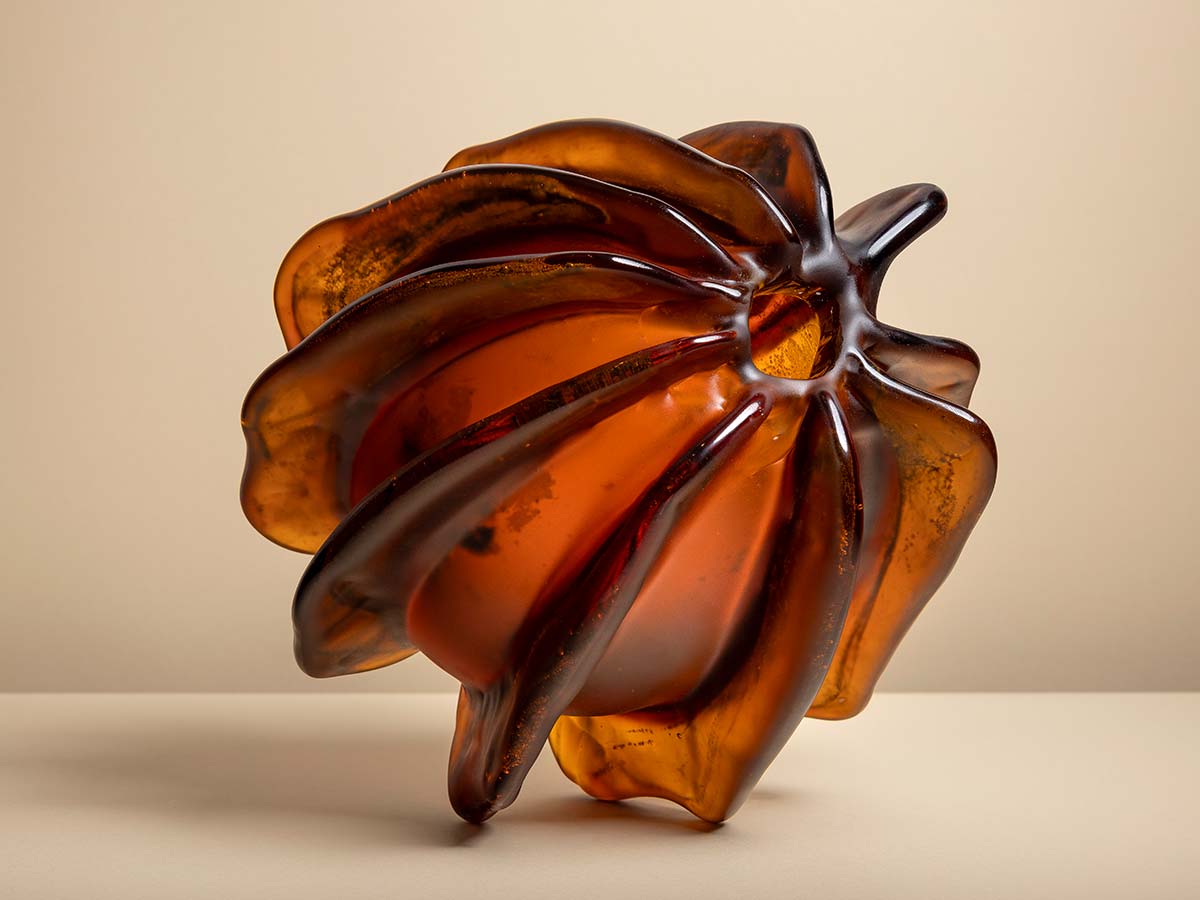
Tell us about your creative process: where do you work and what relationship do you have with the Murano master glassmakers?
My studio is in Brera, Milan, while the workshop is in Murano, the Venetian island that is the beating heart of the glassmaking tradition. Here I work closely with the master glassmakers, sharing with them a deep passion for glass. Our relationship is based on mutual respect and an understanding that allows me to translate the concept of each project into reality. Each glass artifact is born from a constant dialogue, in which the initial idea is discussed and shaped thanks to their mastery. This collaboration is fundamental to the outcome of my works, in which past and present, innovation and tradition merge.
Is there a particular work that you are particularly fond of or that you consider representative of your artistic journey?
I am particularly fond of the “Naturalia” series, especially the works “Corolla”, “Anemone”, and “Botanica Adriatica”. This research represents a key moment in my artistic career, as it embodies the balance between culture and territory, experimentation and tradition, aesthetics and functionality. Through these works, I found a more defined artistic voice, consolidating my personal style. Each piece is infused with a sense of sacredness, suspended in a timeless dimension.
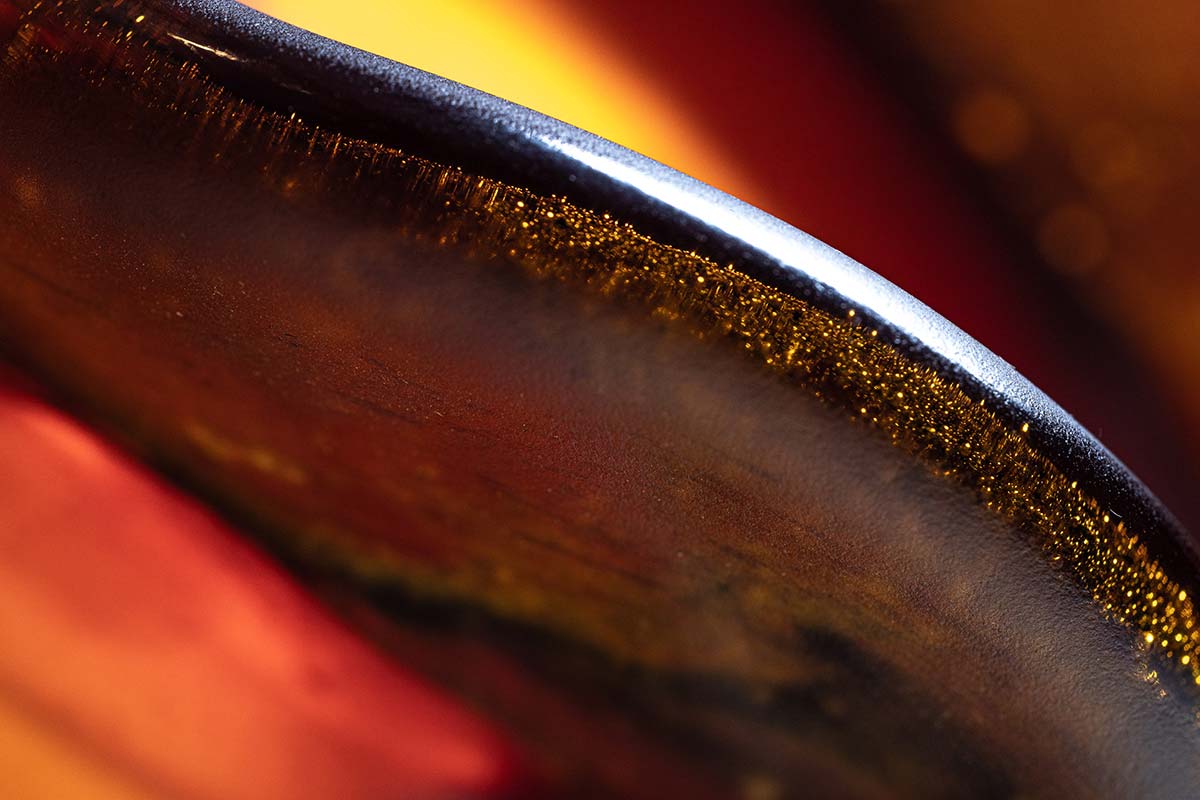
What new and interesting things did you present at Venice Glass Week?
At Venice Glass Week I presented, in addition to “Pistillo” in the HUB itinerary at Palazzo Loredan, the new works: “Archeomateria”, “Albero”, and “Farfalla”. They represent an evolution of my artistic journey, in which each piece is unique and combines glass with unusual ways and materials. The works explore the theme of perception and illusion, playing with light to create surprising visual effects. I am excited to share these new creations and see how they will be received by the public.
Another novelty for The Venice Glass Week was the presentation of The Merchant of Venice’s “Nectars” collection at the Museo di Palazzo Mocenigo. This collection reinterprets the monumental architecture of Venice through blown Venetian glass bottles. Made with the “bulicante” technique, which creates a luminous effect thanks to bubbles trapped in the glass, the bottles are topped with crystal glass stoppers, enriched with gold leaf and shaped like pinnacles. The limited edition of fifty pieces is available in amber, green and red, blending artisanal tradition, design, and collecting.

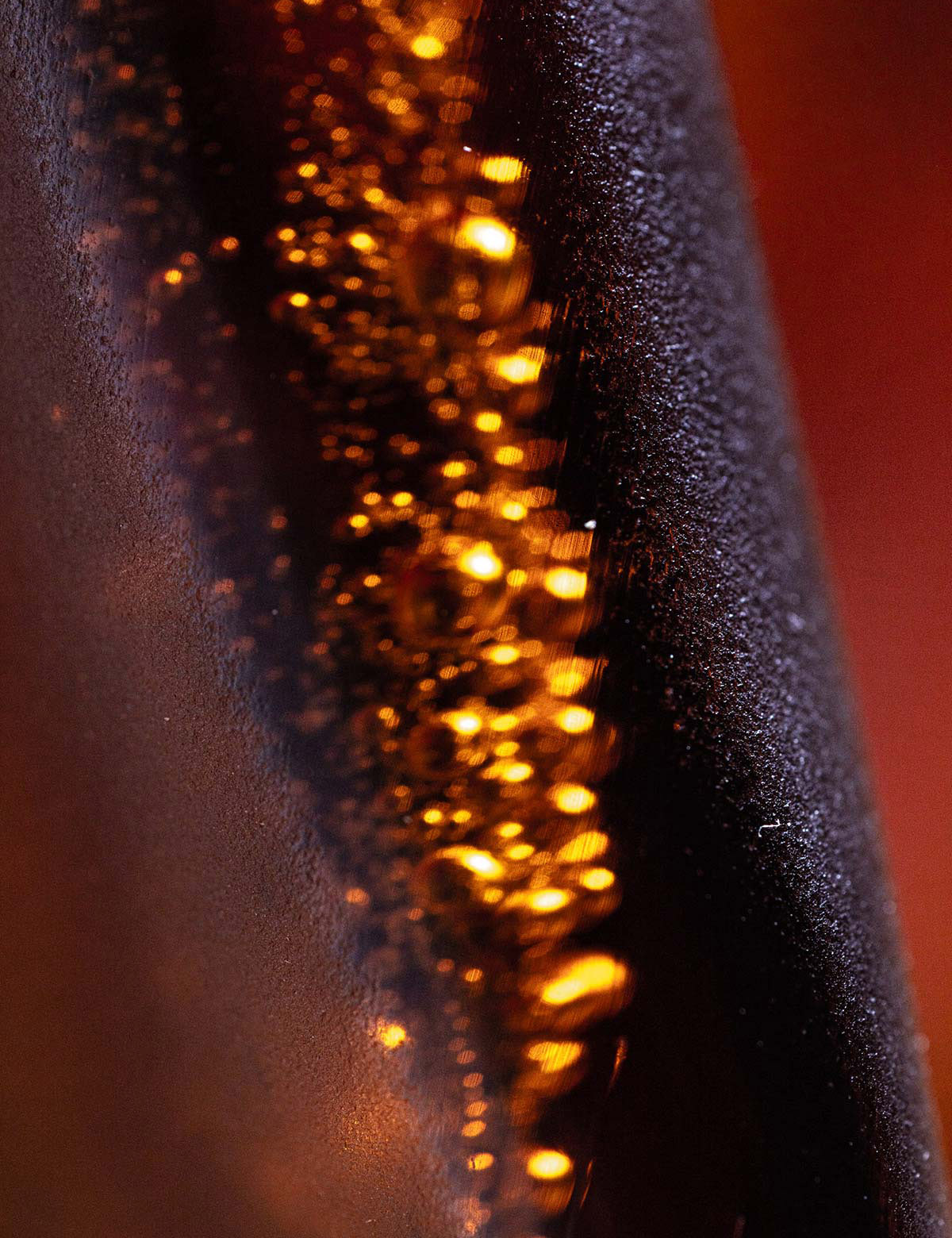
Is there a work you dream of making in the future?
My dream is to continue to explore different glass working techniques to express myself, perhaps combining it with different materials to create even more complex works. A project I dream of realizing is a monumental installation that involves the viewer in an immersive way, offering them a complete sensory experience. I believe that glass still has many unexplored possibilities, and I am excited to continue to discover what it has to offer.

